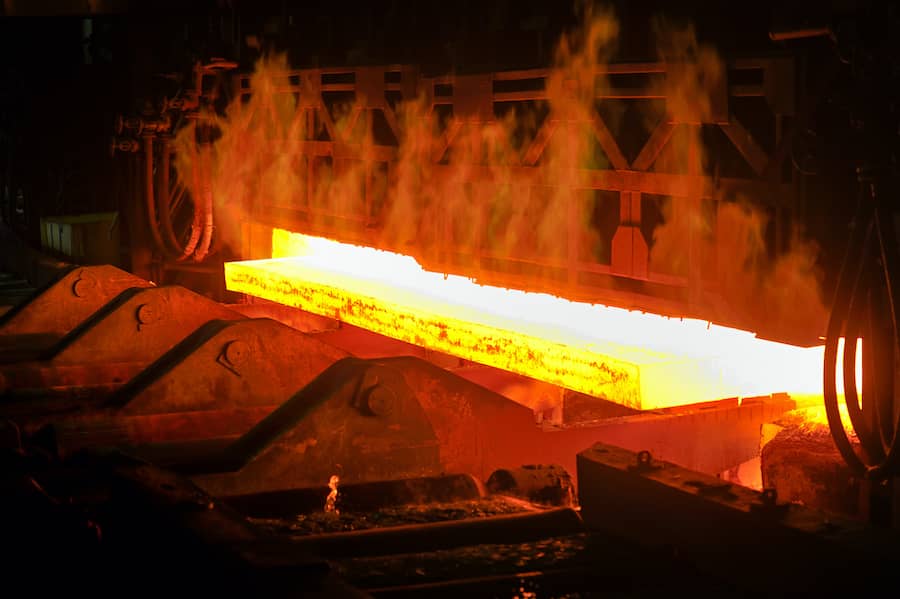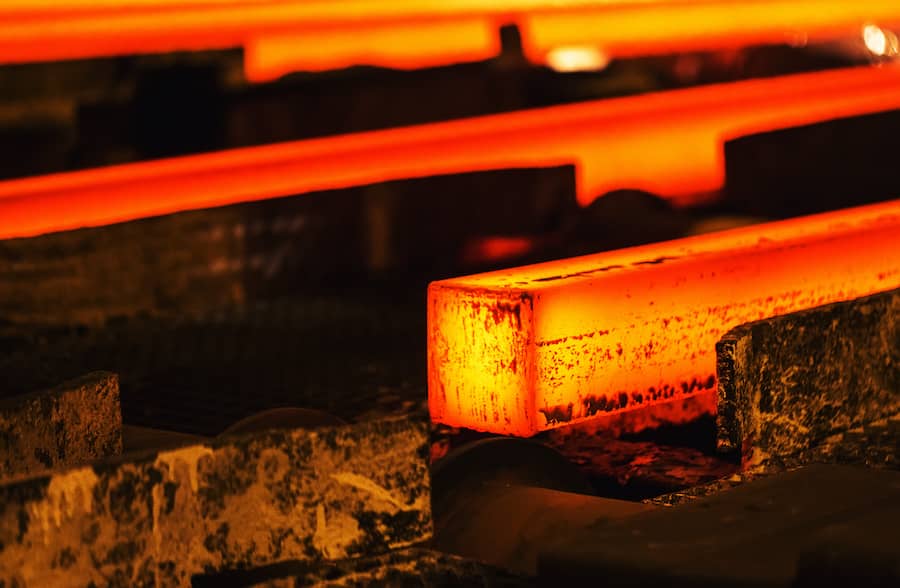Heat Treatment: Processes and Applications
Heat treatment refers to the controlled process of heating and cooling a material in order to improve its properties, performance, and strength. Most metals and alloys are heat treated in one way or another, and the understanding and science of heat treatment have been developed over the past 100 to 125 years. The importance of heat treatment is evident in many products in the automotive, aerospace, construction, agriculture, mining, and consumer goods industries, all using heat treatment to improve the properties of materials, especially steel [2].
Heat treatment adds about $15 billion per year to the value of metal products, with about 80 per cent of those being steel products [2].
Here, you will learn about:
- What heat treatment is
- The basics of heat treatment
- Heat treatment methods
- The applications of heat treatment

What is heat treatment?
Heat treatment is a manufacturing process in which a material, generally a metal or alloy, is altered by heating and cooling cycles under complex thermal boundary conditions and wide temperature ranges. Heat treatment defines the quality of a product in terms of microstructure, mechanical properties, residual stress, and dimensional accuracy [3].
The basics of heat treatment
The heat treatment process can be applied to ferrous metals such as cast-iron, AHSS, stainless steel and other alloy steels, as well as non-ferrous metals such as aluminium, magnesium, titanium, copper, or brass [2].
Heat treatment processes require the following three main steps [2]:
- Heating the material to a specific temperature (in the range of up to 2400 °F / 1316 °C)
- Soaking, or maintaining the specific temperature for a certain amount of time (varying from seconds to more than 60 hours)
- Cooling at a suitable rate following prescribed methods. The material can be cooled rapidly, slowly (in the furnace), or can be quenched (using water, brine, oils, polymer solutions, salts, or gases).

Heat treatment methods
Heat treatment generally consists of controlled heating, soaking and cooling steps.
There are five techniques used for the heat treatment of materials. Here is an overview of these principal heat treatment processes and how they affect the material.
Normalising
This process consists of homogenisation or grain refinement to obtain uniformity in the material microstructure. The material is heated to a temperature above the upper critical line of the iron carbide phase diagram to produce a homogeneous austenitic phase. This is then followed by a cooling phase in slightly agitated air to form ferrite. Normalising is typically applied to ingots prior to working and steel casings prior to hardening [4][5]. Normalising reduces hardness and increases ductility and is usually used after other processes have unintentionally increased hardness and reduced ductility.
Annealing
In this process, the material is heated beyond its upper critical point (the temperature above which austenite forms), soaked there and then cooled at a slow rate. This process is mainly used for relieving internal stresses, softening and refining the grain structure of metals. This results in changes in the mechanical and electrical properties of the metal. Benefits of annealing include improvement of machinability, ease of cold work, and increasing in the dimensional stability. This process is typically used for steels and steel alloys [4].
Surface Hardening
This is also known as case hardening. It includes over a dozen treatments in which the surface of the material is hardened creating a hard ‘case’ while the core remains tough or soft. This provides improved wear resistance for parts such as gears, cams and sleeves. This process is one of the most common for steel and iron.
Hardening
This process consists of heating the material above the critical point, where austenite is formed, followed by cooling. The material can be cooled rapidly in air, oil, water or others. This rapid cooling process is known as quenching and is generally applied to stainless and high-alloy steels, primarily to produce controlled amounts of martensite in the microstructure and obtain increased hardness [2]. Hardening is often used in cast-irons and steels alloyed with metals such as nickel and magnesium.
Age Hardening
Also known as precipitation hardening, this hardening process develops high strength in metals by alloying with elements such as copper, titanium, or aluminium. This process is generally applied to stainless steels with the effect of increasing corrosion and oxidation resistance [6].
Tempering
This process follows a previous hardening process and consists of heating the material to a temperature below the lower critical point followed by cooling at a suitable rate. It is used mainly to increase ductility and toughness and to increase the grain size of the matrix. For example, metals such as steel are often harder and more brittle than desired. Tempering reduces internal stresses and brittleness. This process is mainly used in steels and aluminium-based alloys [4].

Heat treatment applications
The most common application of heat treatment is in metallurgy. The following are some examples of the applications for heat-treated parts [2][7]:
- Automobiles
- Aerospace
- Computers
- Metalworking
- Machinery
- Construction
- Others
The global automotive industry has been a large player in the market of heat-treated metals recently. In terms of materials, steel dominates the industry, but the forecast is for aluminium and other metals for manufacturing automobiles and aircraft to drive market growth. The global market for heat treatment has been evaluated at about $90.7 billion in 2016 and is estimated to expand yearly by 3.5% from 2017 to 2025 [7].
Sources
[1] Vanpaemel, J., History of the Hardening of Steel: Science and Technology, Journal de Physique Colloques, 1982, 43 (C4), pp.C4-847-C4-854
[2] Heat Treating Society, ASM International, What is Heat Treating, The Hearth of Industry, [Online].
[3] Arimoto, K., Li, G., Arvind, A., and Wu, T. W. (1988), The Modeling of Heat Treatment Process, In Heat Treating, Including the Liu Dai Memorial Symposium, Proceedings of the 18th Conference, October, ASM Heat Treating Society.
[4] ASM International, Heat Treating, Subject Guide, [Online].
[5] Sharma, R.C. (1996), Principles of Heat Treatment of Steels, New Age International (P) Ltd Publishers, New Delhi.
[6] Singh, R. (2016), Welding Corrosion-Resistant Alloys In Applied Welding Engineering, Second Edition, Elsevier.
[7] Heat Treating Market Size, Share & Trends Analysis Report By Material (Steel, Cast Iron), By Process, By Equipment, By Application (Automotive, Aerospace), And Segment Forecasts, 2018 – 2025 (2018), Grand View Research [Online].